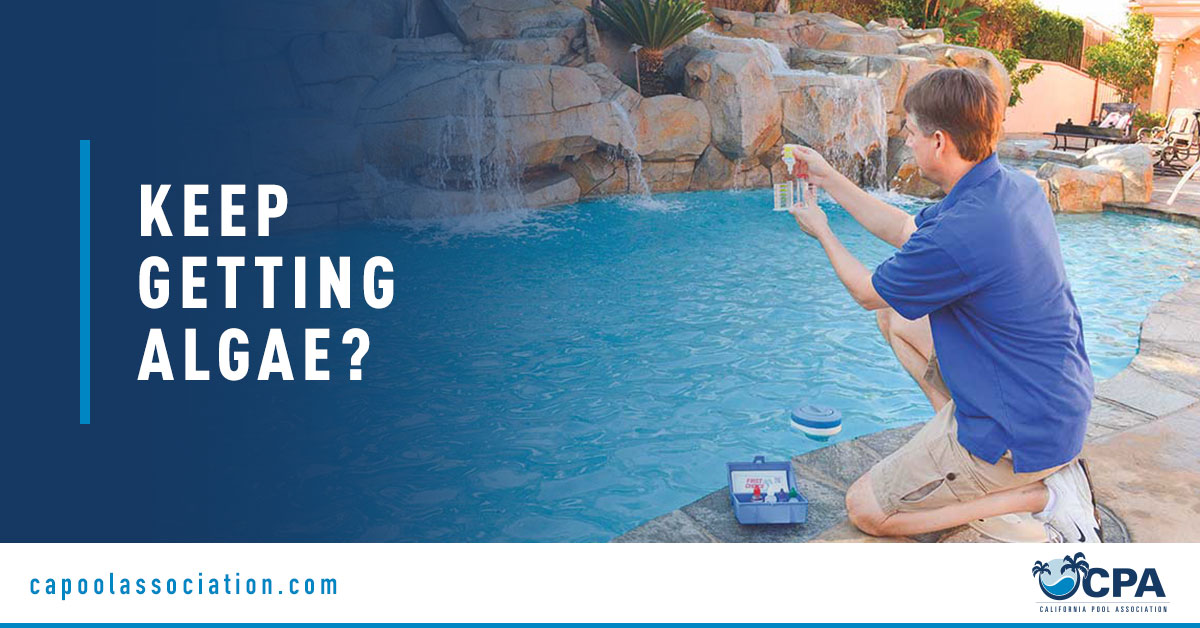
Totally Important
So, you have this pool where every week you give it your full attention; you clean the tile, you scrub the walls, no debris in the pool, all the chemical levels are spot on, filter system running like a dream, but for some crazy reason you keep getting algae and you can’t figure out why. You add algaecide and shock and it may go away for a minute, but before you know it here it comes again. You just can’t get a grip on it. Before you go crazy, check that TDS reading.
When you test pool water, what are the most important tests? Most would say pH, Free Chlorine, Total Chlorine, Conditioner, and Alkalinity. Those are all obviously important, but one more that should be on that list is TDS. Most understand that a high TDS reading can be bad, but unfortunately don’t realize how a high TDS can be playing havoc on the pool water. It is one of the most ignored and untested items we should all be monitoring. What is TDS? TDS stands for Total Dissolved Solids. TDS is exactly what it says it is; any dissolved matter in the water. Everything leaves a little bit of itself behind every time it is introduced to the water. TDS is being introduced constantly and continuously so the older the water, the higher the TDS. You can’t stop TDS from rising, but you should monitor it and react when it gets too high.
What does high TDS do? Many things, but to put it layman’s terms, it will cause your chemicals to be much less efficient. TDS can also cause scale, staining, cloudy water and even corrosion. Ironically when a problem arises we often don’t realize that we have a high TDS situation, so we just dump more and more products into the pool hoping to find that miracle cure. All we are doing is adding to the TDS.
TDS is often at its worst in high evaporation areas. TDS does not evaporate, only the pure water does. Those solids remain behind. The ONLY way to lower TDS is to drain all or a portion of the water and refill with fresh water that has a lower TDS level. TDS is present in tap water, but in most situations it is not out of control. However, well water can have some very high TDS levels. Always test the water source first to make sure you know exactly what is going into the pool.
Just like most everything in life moderation is key. All pools should have a minimum of 300 TDS, but ideally a decent TDS reading is somewhere between 1000-2000. Once you are over that 2000 mark, it’s time to drain some water. For salt pools; remember salt is a TDS, so it is important to know the water you are starting with. You only worry about the TDS above your salt level. So if you know you have a salt level of 3000ppm and your TDS reading is 4000ppm you are ok, because that means your TDS is only at 1000. People usually give salt pools a little more TDS wiggle room before draining. There is not a lot we can do to slow the accumulation of TDS, but like everything else in life remember you get what you pay for. If we add the cheapest salt or chlorine we can find we are probably only adding to our TDS problem at a more rapid pace. Often the “discount” products like those found at big box stores have far more impurities present which only add TDS to the water.
High TDS can wreak havoc on a swimming pool so be sure to check the TDS level in your pools. If you keep your TDS down you can avoid a multitude of problems.
Chris Joerns
Pool & Electrical Products, Inc.